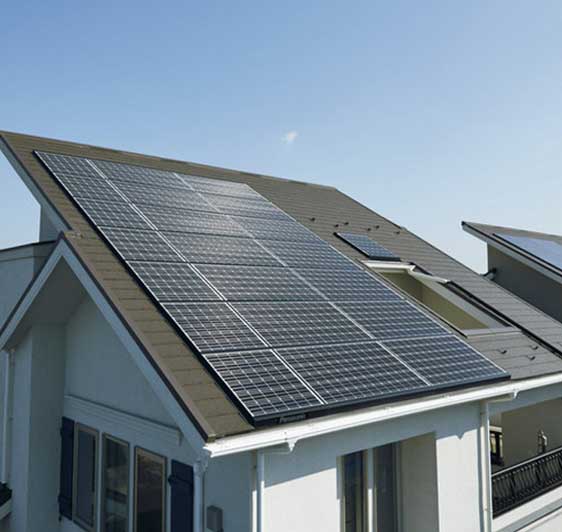
Is Solar worth it?
Here at Suntrust Remodeling, we certainly think so. As does California, which currently produces 20% of it's power by solar energy. By 2030, solar energy will grow to 60% of the states energy production! With that ambitious of a goal, it's no wonder that California has such great incentives to encourage homeowners like you to make the switch.
Don't believe the hype? We don't blame you. We have never had the opportunity to choose how our lights turned on before now. For decades, we paid WHAT we were told to pay, to WHO we were told to pay in order to keep the fridge running. Now solar is popping up everywhere, people are knocking on your door, your phone ringing off the hook with spam calls, and plenty of horror stories being told by the local watering hole. We're here to make sense of it all, and show you why more and more of your neighbors are making the switch.
First, let's break down your options and what that means for the companies offering them. There are multiple ways to go solar, and some of the more popular routes are: Purchasing, Leasing, and doing something called a PPA (Power Purchase Agreement).
Option A) A PPA is when a homeowner makes an agreement with the solar company to buy a predetermined amount of power per month, regardless if they are using the power or not. Most of the time, solar companies build the solar system to produce more than your home uses, leaving you contractually obligated to buy power that you aren't even using. To top it off, most of these agreements include something called an escalator, where the price is scheduled to increase by 2.9-4% per year automatically. So not only are you obligated to buy more power than you need, the price is increasing year over year. After only a few years, you're paying more for the solar than you would have if you just stayed with the utility company. So why do solar companies offer it? Solar companies receive the 30% federal tax rebate, which can mean $1,000's in profit immediately, and then a guaranteed income stream for the next 20-30 years. We DO NOT recommend this route, no matter how enticing it may seem at first.
Option B) The second way is a leasing program. Similar to leasing a car, you'll never own the solar system. This has pro's and con's for you as the homeowner. The pro, is the solar company will provide all of the maintenance for the solar system for a pre specified time period, leaving you little to worry about if the system ever malfunctions. That's all well and good, but homeowners go solar to SAVE money, so who is really making out financially? Short answer, the solar company is. By leasing you a solar system, the solar company is once again receiving your 30% federal tax rebate, and charging you a premium per month to "rent" your roof space. They'll offer you a discount from your current average monthly bill with a more affordable monthly leasing cost, however this cost is also prone to annual increases if you don't read your agreement carefully. Therefore, a lot of homeowners end up leasing a solar system, saving money for a few years, and find themselves eventually catching up to the cost of their old utility bill. It's not the worst option, but it's also not the best option if you're looking to go solar to SAVE money.
Option C) The third, and BEST way is by purchasing your system. By purchasing your solar system, you're entitled to a 30% federal tax rebate (more on that later), and a fixed monthly cost that ENDS. Second, solar financing options are second to none in terms of affordability, term, and interest rates. So unlike your utility bill, which has no expiration as long as your using electricity, your solar loan will end once it's paid off. The cons: You may have to do maintanence yourself. However solar panels require very little maintenance, if any during their 20-30 year lifespan. By purchasing a solar system, you're no longer dependent on the utility provider, or the solar company providing the lease. You're completely energy independent, saving money month over month.
More about this rebate, what is it? By going solar, the federal goverment is enticing homeowners with a 30% dollar for dollar tax rebate from your solar system cost. So if your solar system costs $30,000, the goverment will refund $9,000 come tax time. The amount you receive depends entirely how much you paid in taxes the year prior. For example, if you paid $10,000 in taxes for 2021, and would typically not receive a refund check, you would now receive a $9,000 refund. However, if you only paid in $5,000 for 2021, you would receive a $5,000 tax refund for 2021, and the remaining $4,000 refund for tax year 2022. You have 5 years to collect the entire 30% rebate. However, please be warned. If you are on social security, or some other form of income that does not require you to pay taxes each year, will not be elegible to receive a refund since there is nothing to refund you from. No tax dollars in, no tax refund out.
Now, let's say you need a roof as well. According to tax code, if a roof replacement is required in order to accomodate a solar system, the cost of the roof may be eligible to receive the 30% rebate as well. For example, a new roof that what would normally be a $20,000, now only costs $14,000 after the $6,000 tax rebate. For this reason, most homeowners are finding that the monthly payment for a new roof and solar is costing less than their existing utility bill after applying their tax rebate. Hello savings.
Starting to make a little sense? Good, we hoped so. We're here to answer any and all of your questions when it comes to solar. Book your consultation today, and our solar professionals will configure a solar system that works for you and your home, and walk you through the financials short and long term. Give us a call today!
Limited Time Special – Go Solar for $0 Down – Get your free Solar demo Today – BONUS $1,000 off any system Ask about the Suntrust Platinum Dealer Warranty
